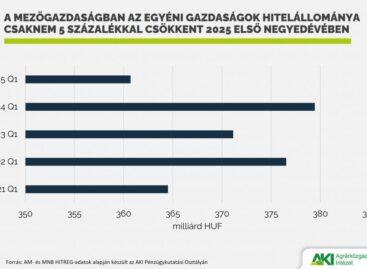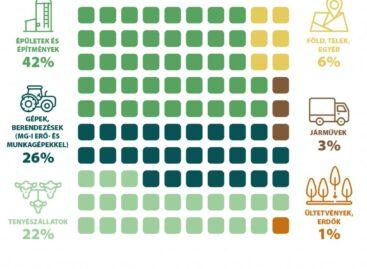What should be done with the orders of the Territorial Monitoring System?
In the past period, 28,000 producers have been notified electronically that there are administrative non-compliances or deviations detected by satellite images in their submitted 2023 uniform application.

(Photo: Pixabay)
In addition to the revealed problem, the order also includes the task to be performed, so as a general rule, until September 29, 2023, and in the case of previous calls started before 2023, with a 9-day deadline, the indicated problems can be corrected without penalty on the Single Application interface or georeferenced with your own mobile phone through the mobilGAZDA application the situation can be clarified by submitting a picture. In accordance with the new EU regulations, starting this year, the Hungarian State Treasury (hereinafter: the Treasury) must examine and evaluate agricultural practices and activities based on satellite images. In the framework of the Territorial Monitoring System (hereinafter: TMR), it is possible to monitor ineligible territorial elements (e.g. artificial surface cover), to investigate ineligible land use, especially if there is not one but several plant cultures or mixtures in the area of the declared field is being cultivated, to identify the plant culture grown on the declared field, and to investigate weeding and overgrazing.
Many people have been notified
In the past period, 28,000 producers were notified electronically that there were administrative non-compliances or deviations detected by satellite images, i.e. potential non-compliances, in their application. In 12,000 cases, a contradiction can be established regarding the application based on the satellite images, in 18,000 cases the clients are informed about administrative non-compliances, and in 8,000 cases, attention is drawn to planned but not implemented second sowings and agrotechnical operations. In addition to the identified problem, the order also contains the task to be performed. The Treasury may send this order several times, if the non-compliance is not resolved, i.e. the applicant does not respond to the provisions of the order. As a general rule, the things indicated in the order can be corrected on the EC’s interface without penalty until September 29, 2023. At the same time, the Treasury imposed a 9-day deadline in the order concerning certain legal titles. This deadline affects 20 calls that do not fall under the scope of the CAP Strategic Plan, i.e. they are related to calls launched before 2023.
It is recommended for all affected producers to clarify the potential non-compliance indicated by the TMR as soon as possible
There are two main options for this. On the one hand, the correction of the relevant part of the unified application, and the partial or complete withdrawal of the application. On the other hand, the submission of a georeferenced image taken by the applicant with his own mobile phone via the mobilGAZDA application. The order also provides detailed information on the details of the preparation of the picture, which results in a simple and quick clarification of the facts; in this way, the time required for the evaluation process of applications can be shortened. In cases where, due to changes in time, the verifiability of the requested data cannot be ensured (e.g. due to the harvesting of crops) and the producer does not clarify his request, the Treasury can order an on-site inspection. If the applicant does not take care of correcting his application even after several notifications, the Treasury is forced to treat the non-compliance as a fact, and it will take this into account when evaluating the application. In this case, the producer must bear the possible consequences resulting from the sanctions. Similar to previous years, it is also necessary to respond to notifications of non-compliance discovered administratively, in order to ensure that possible errors (e.g. overlapping or over-application) do not hinder the processing of applications, and thus speed up the application assessment process. The above process promotes the improvement of the quality of requests, the continuous assistance of customers, the increase of the efficiency of inspections, and at the same time the possible prevention of sanctions. Detailed information on the subject is also available from the Hungarian State Treasury and the National Chamber of Agrarian Economy.
AM
Related news
Agricultural loans decreased by 6 percent
Agricultural loans decreased by 6.0 percent to HUF 1,001.2 billion…
Read more >Agriculture’s income-generating capacity may depend on irrigation
Europe is facing an increasingly significant water shortage, so agriculture’s…
Read more >42 percent of agricultural investments were spent on buildings and structures in 2024
According to preliminary data from the Central Statistical Office, the…
Read more >Related news
WHO: They urge a 50 percent price increase for tobacco, alcohol and sugary drinks
The World Health Organization (WHO) is calling for the prices…
Read more >Eurozone economic growth accelerated in June
The eurozone’s economic performance accelerated in June, according to the…
Read more >This is how drug prices are changing: the government introduced price restrictions
The Ministry of National Economy’s price restrictions on medicines came…
Read more >






